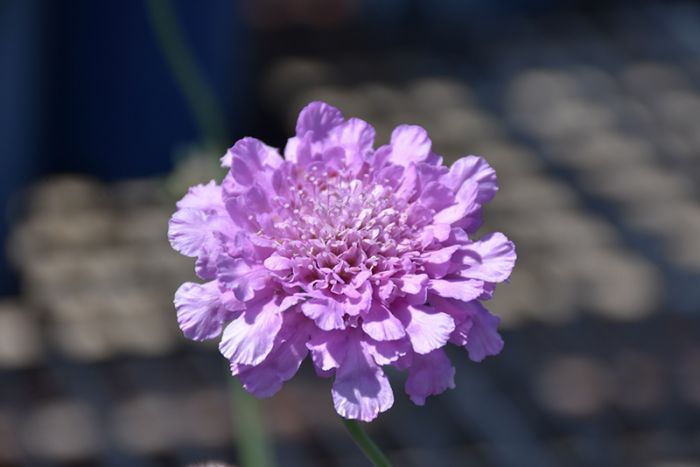Scabiosa, Pincushion Flower 'Flutter™ Rose Pink'




Out of stock
Sold out for the season- Sun Preference
- Full-Sun, Part-Sun
- Bloom Time
- May, June, July, August, September
Description
Compact plants produce larger blooms in richer and deeper colors than older cultivars. Long flowering with rich pink lavender blooms.
Minnesota's Largest Selection of Perennials
Discover an unparalleled selection of perennials at Gertens! With the largest variety in Minnesota, we offer endless options of colorful perennials, natives, and pollinator plants to beautify your garden year after year. From vibrant flowers to lush foliage, our perennials are perfect for adding beauty and charm to your outdoor space. Visit Gertens today and see why we're known as Minnesota's Destination Garden Center!
Details
Flutter™ Rose Pink Pincushion Flower | Scabiosa columbaria 'Balfluttropi'
Height: 14 inches
Spacing: 12 inches
Sunlight: Full Sun to Partial Shade
Hardiness Zone: 4b
Other Names: Scabious
Group/Class: Flutter™ Series
Brand: Ball
Description:
This variety is a low tufted or mounding perennial with short stems that bear small lacy pincushion flowers of rose-pink; long blooming, and has a tidy habit perfect for edging, rock gardens, or containers
Ornamental Features
Flutter™ Rose Pink Pincushion Flower features unusual rose pincushion flowers with pink overtones at the ends of the stems from late spring to early fall. The flowers are excellent for cutting. Its deeply cut ferny leaves remain green in color throughout the season.
Landscape Attributes
Flutter™ Rose Pink Pincushion Flower is an herbaceous perennial with tall flower stalks held atop a low mound of foliage. It brings an extremely fine and delicate texture to the garden composition and should be used to full effect.
This is a relatively low maintenance plant, and should be cut back in late fall in preparation for winter. It is a good choice for attracting bees and butterflies to your yard, but is not particularly attractive to deer who tend to leave it alone in favor of tastier treats. It has no significant negative characteristics.
Flutter™ Rose Pink Pincushion Flower is recommended for the following landscape applications;
- Mass Planting
- Border Edging
- General Garden Use
- Container Planting
Planting & Growing
Flutter™ Rose Pink Pincushion Flower will grow to be about 12 inches tall at maturity, with a spread of 12 inches. When grown in masses or used as a bedding plant, individual plants should be spaced approximately 12 inches apart. It grows at a fast rate, and under ideal conditions can be expected to live for approximately 10 years. As an herbaceous perennial, this plant will usually die back to the crown each winter, and will regrow from the base each spring. Be careful not to disturb the crown in late winter when it may not be readily seen!
This plant does best in full sun to partial shade. It prefers to grow in average to dry locations, and dislikes excessive moisture. It is considered to be drought-tolerant, and thus makes an ideal choice for a low-water garden or xeriscape application. It is not particular as to soil type or pH. It is highly tolerant of urban pollution and will even thrive in inner city environments. This is a selected variety of a species not originally from North America. It can be propagated by division; however, as a cultivated variety, be aware that it may be subject to certain restrictions or prohibitions on propagation.
Flutter™ Rose Pink Pincushion Flower is a fine choice for the garden, but it is also a good selection for planting in outdoor pots and containers. It is often used as a 'filler' in the 'spiller-thriller-filler' container combination, providing a mass of flowers against which the larger thriller plants stand out. Note that when growing plants in outdoor containers and baskets, they may require more frequent waterings than they would in the yard or garden. Be aware that in our climate, most plants cannot be expected to survive the winter if left in containers outdoors, and this plant is no exception. Contact our experts for more information on how to protect it over the winter months.
More Information
| Common Family Name | Pincushion Flower |
|---|---|
| Gerten Grown Plants | Gerten Grown Plants |
| Available for Pre-Order | Yes |
| Sun Preference | Full-Sun, Part-Sun |
| Bloom Time | May, June, July, August, September |
| Mature Spread (Range) | Under 12" |
| Mature Height (Range) | 13" - 24" |
| USDA Hardiness Zone | 5, 6, 7, 8, 9 |


